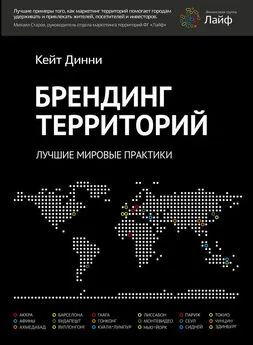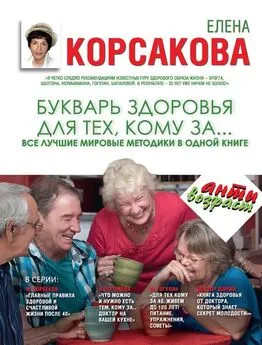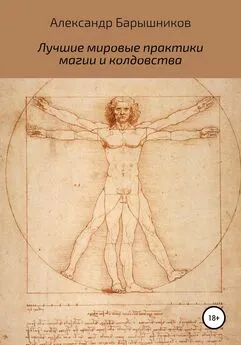Кейт Динни - Брендинг территорий. Лучшие мировые практики
- Название:Брендинг территорий. Лучшие мировые практики
- Автор:
- Жанр:
- Издательство:Манн Иванов Фербер
- Год:2013
- Город:Москва
- ISBN:978-5-91657-655-9
- Рейтинг:
- Избранное:Добавить в избранное
-
Отзывы:
-
Ваша оценка:
Кейт Динни - Брендинг территорий. Лучшие мировые практики краткое содержание
Брендинг территорий. Лучшие мировые практики - читать онлайн бесплатно полную версию (весь текст целиком)
Интервал:
Закладка:
14. Anholt-Gfk Roper City Brands Index (2009), www.gfkamerica.com
15. Anon (2010), Absolutely, positively Wellington, Business Today, Issue 41 (Dec. 2009 – Jan. 2010), p. 53.
16. Ariffin, A.A.M. and Hasim, M.S. (2009), Marketing Malaysia to the Middle East tourists: Towards a preferred inter-regional destinations, International Journal of West Asian Studies, Vol. I, No. I, pp. 43–58.
17. Ashworth, G. (2009), The instruments of place branding: How is it done? European Spatial Research and Policy, Vol. 16, No. I, pp. 9–22.
18. Askegaard, S. and Gen G, (1998), Product-country images: Towards a contextualized approach, European Advances in Consumer Research, Vol. 3, pp. 50–58.
19. Astrup, S. (2009), Politiken.dk, febenhavns ry vinder pa topmade [Copenhagen’s reputation wins at summit], Politiken.dk, 19 December; available at: http://politiken.dk/klima/Topmode_i_Kobenhavn/article864489.ece(accessed 5 February 2010).
20. Avraham, E. and Ketter, E. (2008), Media Strategies for Marketing Places in Crisis: Improving the Image of Cities, Countries and Tourist Destinations, Butten/vorth-Heinemann, Oxford, United Kingdom.
21. Baker, B. (2007), Destination Branding for Small Cities: The Essentials for Successful Place Branding, Creative Leap Books, Portland, Oregon, United States.
22. Balibrea, M. (2001), Urbanism, culture and the post-industrial city: Challenging the ‘Barcelona Model, Journal of Spanish Cultural Studies, Vol. 2, No. 2, pp. 187–210.
23. Balmer, J.M.I. and Greysen, S.A. (2003), Revealing the Corporation: Perspectives on Identity, Image, Reputation, Corporate Branding and Corporate Branding, Routledge, London, United Kingdom.
24. Bayliss, D. (2007), The rise of the creative city: Culture and creativity in Copenhagen, European Planning Studies, Vol. 15, No. 7, pp. 889–903.
25. Bell, D. and Valentine, G. (1997), Consuming Geographies: We are Where We Eat, Routledge, London, United Kingdom.
26. Bentil, N.L. (2010), Accra declared Millennium City, Daily Graphic (Metro News), 16 January, p. 18.
27. Beracs, J. (2005), Opinion pieces: How has place branding developed during the year that Place Branding has been in publication? Place Branding, Vol. 2, No. I, pp. 6–17.
28. Bickford-Smith, V. (2009), Creating a city of the tourist imagination: The case of Cape Town, The Fairest Cape of Them All, Urban Studies, Vol. 46, No. 9, pp. 1763–1785.
29. Biel, A.L. (1993), Converting image into equity, in Aaker; D. and Biel, A.L (eds), Brand Equity and Advertising – Advertising’s Role in Building Strong Brands, Psychology Press, United States, pp. 67–82.
30. Black, R, (2009), Why did Copenhagen fail to deliver a climate deal? BBC News, 22 December 2009, available at: http://news.bbc.co.Uk/2/hi/science/nature/8426835.stm (accessed 5 February 2010).
31. Boer, J.D. (2009), Top 20 of the world’s best city icons, The Pop-Up City, online, available at: http://popupcity.net/2009/05/top-20-of-the-worlds-best-city-icons/ (accessed 7 January 2010).
32. Boissevain, J. (1992), Introduction, in Boissevain, J. (ed.), Revitalizing European Rituals, Routledge, London, United Kingdom, pp. 1–19.
33. Braiterman, J. and Takahashi, Y (2010), Urban biodiversity identification and tracking system, paper presented at Urban Biodiversity & Design – URBIO 2010 International Conference, 18–22 May, Nagoya, Japan.
34. Brown, A. (2010), Just Enough: Lessons in Green Living from Traditional Japan, Kodansha International, Tokyo, Japan.
35. Brown, G., Chalip, L., Jago, L. and Mules, T. (2002), The Sydney Olympics and brand Australia, in Morgan, N., Pritchard, A. and Pride, R. (eds), Destination Branding: Creating the Unique Destination Proposition, Butterworth-Heinemann, Oxford, United Kingdom, pp. 163–185.
36. Buchan Consulting (2003), Wollongong Economic Development Road Map, available at: http://www.wollongong.nsw.gov.au/documents/Wollongong_Economic_Development_Roadmap.pdf (accessed 15 May 2010).
37. Burgan, B. and Mules, Т. (1992), Economic impact of sporting events, Annals of Tourism Research, Vol. 19, No. 4, pp. 700–710.
38. Business Week (2009a), The Madrid region concentrated 82 % of foreign direct investment into Spain during 2008. Do you want to know why? 28 December, p. 23.
39. Business Week (2009b), Japan regional initiative – Food industry Saitama-Shizuoka: A mouthwatering opportunity, 28 December, p. 77.
40. Business Week (2009c), The Kyrgyz Republic looks ahead, 28 December; pp. 85–91.
41. Carn, J. and Servon, L. (2009), Vernacular culture and urban economic development: Thinking outside the (big) box, Journal of the American Planning Association, Vol. 75, No. I, pp. 28–40.
42. CEOs for Cities (2010), New York city’s $l9b green dividend, April 21, available at: http://www.ceosforcities.org/ (accessed 30 May 2010).
43. Chalip, L. and Costa, C.A. (2005), Sport event tourism and the destination brand: Towards a general theory, Sport in Society, Vol. 8, No. 2, pp. 218–237.
44. Chang, Т.С. (2000), Renaissance revisited: Singapore as a ‘Global City for the Arts’, International Journal of Urban and Regional Research, Vol. 24, No. 4, pp. 818–831.
45. Chesshyre, T. (2009), Copenhagen: Europe’s greenest city, The Times, 5 December; available at: http://www.timesonline.co.uk/tol/travel/holiday_type/green_travel/article6941259.ece (accessed 5 February 2010).
46. Chinese Academy of Social Sciences (2009), Blue Book of Cities in China, Urban Development and Environment Research Center; Beijing, China.
47. Choe, S.-H. (2010), In Seoul, green transit is mayor’s pet project, New York Times, 27 March.
48. Clark, G. (2007), Report to the Economic Development Committee, City of Toronto, a Presentation to The City of Toronto, January 24.
49. Cohen, E. (1988), Authenticity and commoditization in tourism, Annals of Tourism Research, Vol. 15, No. 3, pp. 371–386.
50. Commission on Strategic Development (2000), Bringing the vision to life: Hong Kong’s long-term development needs and goals, available at: http://wwwinfo.gov.hk/gia/general/200002/21/0221082.htm (accessed 12 January 2010).
51. Crandall, D., Backstrom, L., Huttenlochen, D. and Kleinberg, J. (2009), Mapping the world’s photos, Working Paper of the International World Wide Web Conference Committee, 20–24 April, Madrid, Spain, available at: http://www2009.eprints.org/77/1/р761.pdf (accessed 5 June 2010).
52. Cushman & Wakefield (2009 ), European Cities Monitor 2009, www.cushwake.com
53. Daily Express, East Malaysia (2009), Najib explains ‘One Malaysia’ concept, 3 April, available at: http://www.dailyexpress,com.my/news.cfm?NewslD=63970 (accessed 7 January 2010).
54. DBKL (2008), Research on creating various tourism products in Kuala Lumpur, prepared by the Consultation Unit of the University of Malaya for Kuala Lumpur City Hall.
55. De Carlo, M., Canali, S., Pritchard, A. and Morgan, N. (2009), Moving Milan towards Expo 2015: Designing culture into a city brand, Journal of Place Management and Development, Vol. 2, No. I, pp. 8–22.
56. de Chernatony, L. (1999), Brand management through narrowing the gap between brand identity and brand reputation, Journal of Marketing Management, Vol. 15, Nos 1–3, pp. 157–179.
57. de Chernatony, L. and Christodoulides, G. (2004), Taking the brand promise online: Challenges and opportunities, Interactive Marketing, Vol. 5, No. 3, pp. 238–251.
58. Delaney, K., and Eckstein, R. (2007), Urban power structures and publicly financed stadiums, Sociological Forum, Vol. 22, No. 3, pp. 331–353.
59. Delanty, G. (1998), Redefining political culture in Europe today: From ideology to the politics of identity and beyond, in Hedentoft, U. (ed.), Political Symbols, Symbolic Politics: European Identities in Transformation, Ashgate Publishing Company, Hampshire, United Kingdom, pp. 23–43.
60. Demos (2003), Manchester is favourite with the ‘new bohemians’, available at: http:// www.demos.co.uk/press_releases/bohobritain (accessed 10 January 2010).
61. Destination Edinburgh marketing alliance: A step change for Edinburgh, September 2009, DEMA (prepared on their behalf by Leithal Thinking), Available at: http://www.edinburgh-brand.com/PDF/DEMA%20General%20Presentation%20Decemberpdf(accessed 5 February 2010).
62. Devlin, J.F. and McKechnie, S. (2008), Consumer perceptions of brand architecture in financial services, European Journal of Marketing, Vol. 42, No. 5/6, pp. 654–666.
63. Dickinson, S. (2006), Urban regeneration: UK practice, in Diamond, J., Liddle, J., Southern, A. and Townsend, A. (eds), Managing the City, Routledge, United Kingdom, pp. 16–31.
64. Dinnie, K. (2008), Nation Branding – Concepts, Issues, Practice, Butterworth-Heinemann, Oxford, United Kingdom.
65. Dooley, G. and Bowie, D. (2005), Place brand architecture: Strategic management of the brand portfolio, Place Branding, Vol. 1, No. 4, pp. 402–419.
66. dottourism.com (2010), Case study – Monaco, available at: http://www.dottourism.com/case-study-monaco-tourism-email-marketing.php (accessed 5 January 2010).
67. Dutch Ministry of Foreign Affairs (2008), Be Our Guests: Policy Review on Hosting International Organisations in the Netherlands, No. 316, The Hague: Inspectie Ontwikkelingssamenwerking en Beleidsevaluatie.
68. Echtner, C.M, and Ritchie, J.R.B. (2003), The meaning and measurement of destination image: [Reprint of original article published in Vol. 2, No. 2, 1991: 2–12.] , Journal of Tourism Studies, Vol. 14, No. I, pp. 37–48.
69. Economist (2009), Go north… or go south, 8 June, available at: http://www.economist.com/markets/rankings/displaystory.cfm?storyJd=EI_TPRDJSSD(accessed 5 February 2010).
70. Ecorys Research and Consulting (2008), The City and Region Success Carrier, available at: http://www.ecorys.com/news-items-press-releases/the-ecorys-approach-to-place-market-ing.html (accessed 2 May 2008).
71. Education Malaysia (2009), International student statistics, available at: http://educationmalaysia.gov.my/studentpass2008.php (accessed 27 January 2010).
72. Edvinsson, L. (2006), Aspects on the city as a knowledge tool, Journal of Knowledge Management, Vol. 10, No. 5, pp. 6–13.
73. Ernst & Young (2008), Baromed 2008, The Next European Frontien www.ey.com
74. Ernst & Young (2009), Globalization Index 2009, available at: http://www.ey.com/GL/en/lssues/Business-environment/Redrawing-the-map-globalization-and-the-changing-world-of-business – The-Globalization-lndex-2009 (accessed 2 June 2010).
75. Evans, G. (2003), Hard-branding the cultural city – From Prado to Prada, International Journal of Urban and Regional Research, Vol. 27, No. 2, pp. 417–440.
76. Finfacts (2008), Dublin fourth most expensive city of 71 global cites – Kuala Lumpur cheapest according to UBS report, available at: http://www.finfacts.com/irishfinancenews/article_1012932.shtml (accessed 21 January 2010).
77. Florek, M. and Conejo, F. (2007), Export flagships in branding small developing countries: The cases of Costa Rica and Moldova, Place Branding and Public Diplomacy, Vol. 3, No. I, pp. 53–72.
78. Florek, M., Insch, A. and Gnoth, J. (2006), City Council websites as a means of place brand identity communication, Place Branding, Vol. 2, No. 4, pp. 276–296.
Читать дальшеИнтервал:
Закладка:










